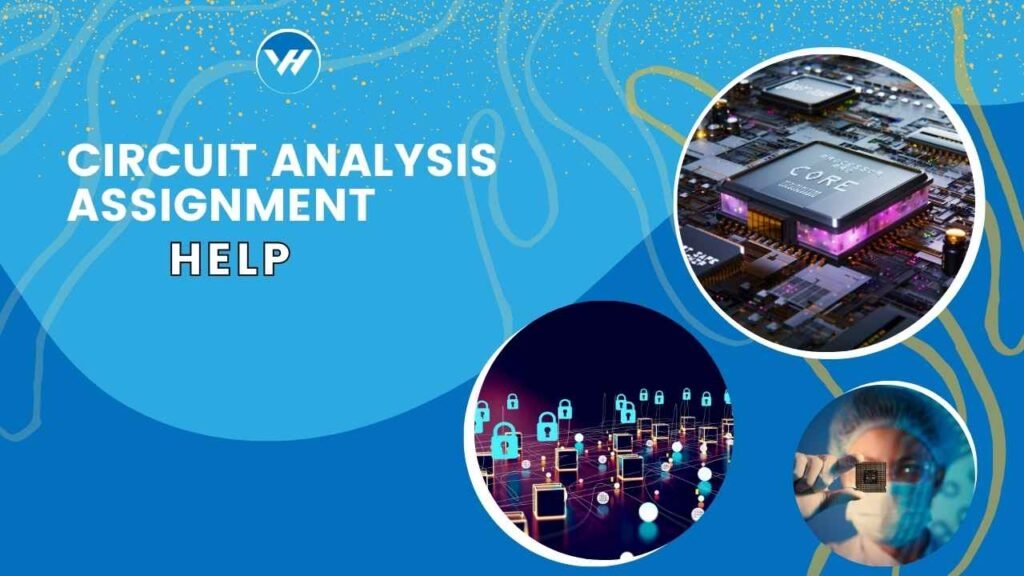Circuit analysis is a fundamental aspect of electrical engineering that involves examining electrical circuits to determine their behavior and characteristics. It’s the process of understanding how circuits function by analyzing the relationships between voltage, current, and resistance. Whether it’s for designing new circuits or troubleshooting existing ones, mastering circuit analysis is crucial for any aspiring engineer.

Table of Contents
ToggleImportance of Circuit Analysis in Engineering
Understanding circuit analysis is essential for numerous engineering applications. It forms the basis for designing electronic devices, developing systems, and solving real-world electrical problems. From simple household electronics to complex industrial systems, the principles of circuit analysis are applied to ensure functionality and efficiency.
Common Challenges in Circuit Analysis
Understanding Complex Circuits
One of the biggest challenges students face is dealing with complex circuits. These circuits often have multiple components, including resistors, capacitors, and inductors, which can make analysis daunting. Recognizing how these components interact and influence each other requires a solid grasp of circuit theory and analytical techniques.
Applying Theoretical Concepts to Practical Problems
Another common issue is bridging the gap between theoretical concepts and practical applications. Students often struggle with applying abstract principles to real-world problems, leading to confusion and errors in their analysis.
Common Mistakes Students Make
Students frequently make mistakes such as incorrect application of formulas, overlooking circuit components, or misinterpreting circuit diagrams. These errors can lead to incorrect results and a lack of understanding of the underlying principles.
Tools and Techniques for Circuit Analysis
Essential Software for Circuit Analysis
Modern circuit analysis often involves using software tools that simplify complex calculations and simulations. Some popular tools include:
- SPICE (Simulation Program with Integrated Circuit Emphasis): A powerful tool for simulating and analyzing electrical circuits.
- Multisim: Known for its user-friendly interface and extensive component library.
- LTspice: A free, high-performance simulation software that’s widely used for circuit design and analysis.
Key Analytical Techniques
Ohm’s Law
Ohm’s Law is a fundamental principle in circuit analysis that states that the current (I) through a conductor between two points is directly proportional to the voltage (V) across the two points and inversely proportional to the resistance (R). The formula is V = IR.
Kirchhoff’s Laws
Kirchhoff’s Laws are crucial for analyzing complex circuits:
- Kirchhoff’s Voltage Law (KVL): The sum of all voltages around a closed loop in a circuit is zero.
- Kirchhoff’s Current Law (KCL): The sum of currents entering a junction equals the sum of currents leaving the junction.
Thevenin’s and Norton’s Theorems
These theorems simplify circuit analysis by reducing complex networks to simpler equivalent circuits.
- Thevenin’s Theorem: Any linear circuit with voltage sources and resistors can be replaced by a single voltage source and series resistor.
- Norton’s Theorem: Any linear circuit can be replaced by a current source in parallel with a resistor.
How to Approach Circuit Analysis Assignments
Step-by-Step Approach
Understanding the Problem Statement
Start by carefully reading the problem statement. Identify the type of circuit you’re dealing with and the specific requirements of the assignment.
Drawing Circuit Diagrams
Accurate circuit diagrams are essential for effective analysis. Ensure that all components are correctly represented and labeled.
Applying Analytical Methods
Apply appropriate analytical methods such as Ohm’s Law, Kirchhoff’s Laws, or Thevenin’s Theorem to solve the circuit. Perform calculations methodically to avoid errors.
Using Circuit Simulation Tools
Simulation tools can help visualize the circuit’s behavior and verify calculations. They provide a practical way to test different scenarios and understand the circuit’s performance.
Resources for Circuit Analysis Help
Online Tutorials and Guides
There are numerous online resources available for learning circuit analysis. Websites like Khan Academy, Coursera, and YouTube offer valuable tutorials and guides.
Books and Textbooks
Textbooks such as “Electrical Engineering: Principles and Applications” by Allan R. Hambley and “Fundamentals of Electric Circuits” by Charles K. Alexander and Matthew N. O. Sadiku provide in-depth coverage of circuit analysis concepts.
Academic Forums and Study Groups
Participating in academic forums and study groups can provide additional support and insights. Platforms like Reddit, Stack Exchange, and university forums are great places to ask questions and discuss circuit analysis topics.
Getting Professional Help with Circuit Analysis
Benefits of Seeking Professional Help
Seeking professional help can significantly enhance your understanding and performance. Tutors and experts can provide personalized guidance, clarify concepts, and assist with challenging problems.
How Virtual Help Can Assist You
Features of Virtual Help
Virtual Help is an online platform designed to connect students with tutors and assignment help services. It offers a range of features:
- 24/7 Access to Tutors: Get help anytime, anywhere.
- Specialized Assistance: Find experts in circuit analysis and other subjects.
- Interactive Learning: Engage in one-on-one sessions and get immediate feedback.
How to Use Virtual Help for Circuit Analysis Assignments
To get started with Virtual Help, simply download the app, create an account, and search for tutors specializing in circuit analysis. You can schedule sessions, upload assignments, and receive personalized support tailored to your needs.
Conclusion
Circuit analysis is a critical skill for electrical engineering students, and mastering it can open doors to various opportunities in the field. By understanding common challenges, utilizing effective tools and techniques, and seeking help when needed, you can excel in your circuit analysis assignments. Remember, Virtual Help is here to support you with expert guidance and resources, making your learning journey smoother and more efficient.
FAQs
What is the best way to start a circuit analysis assignment?
Start by thoroughly reading the problem statement and understanding the circuit components. Create a detailed circuit diagram and apply appropriate analytical methods to solve the problem.
How can I improve my understanding of circuit analysis?
Enhance your understanding by practicing regularly, using simulation tools, and seeking help from tutors or online resources. Engaging in study groups and discussing problems with peers can also be beneficial.
Are there any free tools available for circuit analysis?
Yes, there are several free tools available, such as LTspice for circuit simulation and online calculators for solving basic circuit problems.
What should I do if I am stuck on a circuit analysis problem?
If you’re stuck, break down the problem into smaller parts, review your calculations, and consult resources like textbooks, online tutorials, or seek help from a tutor.
How can Virtual Help support me with my circuit analysis assignment?
Virtual Help offers access to experienced tutors, personalized assistance, and a range of resources to help you understand and solve circuit analysis problems effectively.





